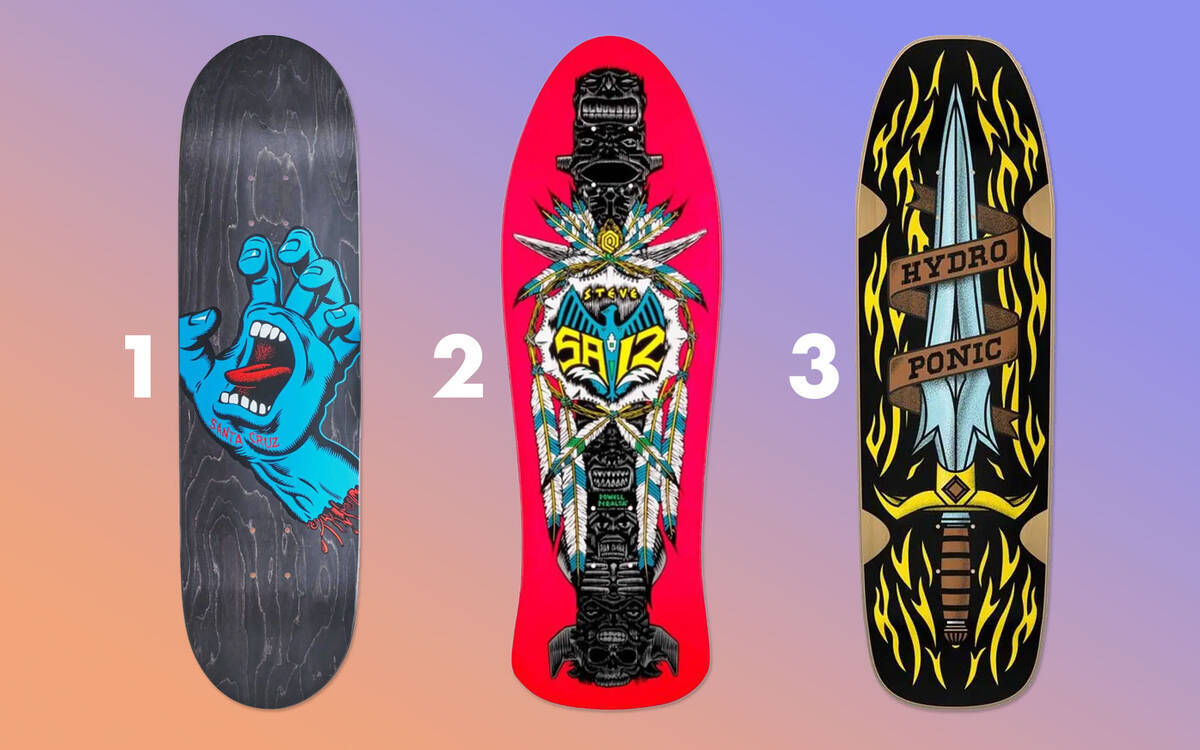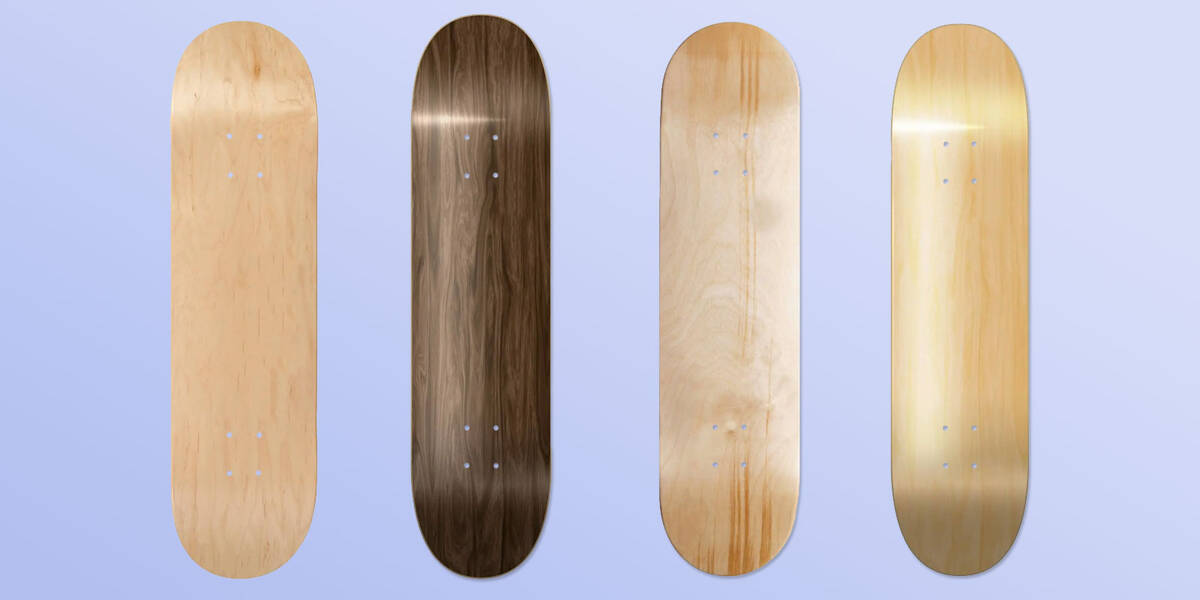Skateboard Deck Buying Guide
Picking out the correct skateboard deck is not overly complex, but it requires more consideration than merely choosing the deck with the most attractive graphics. You might be questioning how to choose the ideal skateboard deck size or which deck shape suits you best. Additionally, what is the finest wood for a skateboard deck?
Whether you’re after recommendations for novice skateboarders or you're an advanced skater in search of a fresh deck, this guide aims to address any queries you might have when on the hunt for the perfect skateboard deck.
Overview
Determining the Right Size for Your Skateboard Deck
Your shoe size is a useful indicator for determining the appropriate skateboard deck size. Generally, the larger your shoe size, the wider your deck should be.
Your skateboarding style is also crucial when selecting deck width. A wider deck is generally preferable for vert and bowl skating, while a narrower deck is better for street skating and flip tricks. Consider these points:
- Wider decks: Offer more stability and are easier for landing tricks on due to the larger platform for your feet. However, the additional width adds weight, requiring more strength to lift the skateboard off the ground and to rotate it.
- Narrower decks: They’re more nimble and simpler to flip since they weigh less. However, being smaller means it's harder to catch the board after a flip, making trick landings slightly more challenging.
The choice ultimately rests with your personal preferences, but we advise consulting our skateboard size guide to determine the optimal skateboard deck size relative to your shoe size.
ALIGNING DECK WIDTH WITH TRUCK WIDTH

For proper alignment of skateboard decks and trucks, the common advice is to match the width of your skateboard deck to the axle width of your skateboard trucks. Ideally, the truck axle width should align with the deck width and not vary by more than a quarter of an inch.
While it's ultimately your setup and you might have differing preferences, this guideline is one most skaters prefer to follow.
SKATEBOARD LENGTH
The length of a skateboard deck is not a concern for every skater since it's usually in proportion to the width; wider decks tend to be longer, and narrower decks shorter. Typical skateboard deck lengths range from 29” to 32”.
The deck's length affects the wheelbase and the stability of your setup. Consider your leg length too: shorter decks can be easier to control for those with shorter legs, while longer decks might suit those with longer legs.
For enthusiasts of longer skateboards, explore these pages:
Exploring Skateboard Deck Shapes: Popsicles, Eggs & Hybrids

1. Popsicle shape 2. Old School Shape 3. Hybrid Shape
Nowadays, popsicle-shaped decks are strongly associated with skateboards, yet this design is just one stage in an evolutionary journey. New skateboard deck designs evolve alongside the creativity of skaters, who continually push the boundaries of what’s achievable on a skateboard.
POPSICLE SKATEBOARD DECKS
Popsicle skateboard decks boast both a kick-tail and a kick-nose, enabling skaters to pop tricks from either end. This almost symmetrical design opened up opportunities for performing fakie tricks, nollies, nose slides, switch riding, and more. Popsicle skateboard decks are closely linked to the rise of street skating in the early '90s, a time when skaters made groundbreaking innovations with flip tricks, slides, and grinds on the streets.
SHAPED SKATEBOARD DECKS
Trends are ever-changing, and the popsicle stick shape is merely one amongst various skateboard deck forms. Hybrid skateboard decks blend the popsicle stick shape with old-school designs.
Some skateboarders prefer egg-shaped decks, typically over 9 inches in width. Unlike popsicle sticks, they feature an oval form said to combine the agility of popsicle shapes with a larger and more stable foot platform.
Many old-school decks are available in today’s market. They can be ridden in the bowl or used for street cruising—what you decide to do with them is your choice! Check out our cruiser skateboard decks for some impressive retro deck styles:
The Role of Concave in Skateboard Decks

Deck concavity is a prominent feature in modern skateboard decks, associated with the ascendancy of technical street skating. The concavity, or the board's curvature from edge to edge, is believed by many skaters to facilitate flip tricks and provide additional leverage. It aids in foot placement on the board and also increases the deck’s rigidity. Skateboard deck concave often falls into three categories: low, medium, and high:
- Low concave: Subtle curvature for a stable ride and low centre of gravity.
- Medium concave: Supports flip tricks and enhances control. A safe bet for most skaters.
- High concave: Characterised by pronounced curvature, this affects the board's handling significantly. Known for delivering agility and ease in board flipping.
The concavity of the deck you choose will impact your ride, so think about how it affects these aspects:
- Deck comfort and feel
- Leverage during tricks
- Deck rigidity, influencing the deck’s pop
Types of Wood Used for Skateboard Decks

Maple is the predominant wood used for skateboard decks owing to its features such as strength, impact resistance, light weight, and flexibility.
Skateboard decks consist of multiple layers of wood, compressed and bonded with glue or epoxy between each layer. Most skateboard decks feature 7-ply maple—a composition of seven maple layers or veneers. Maple’s ease of shaping and its retention of form post-moulding make it ideal for skateboards.
Various maple types possess distinct properties. For instance, Canadian maple is about 15% harder than Chinese maple, attributed to the denser growth rings of trees in Canada’s colder climates compared to those in warmer regions.
If you're seeking a deck for extensive heavy use and abundant pop and stiffness, opt for the hardest wood type. If you're new to skateboarding, the slight hardness variations might not matter as much as the price, and you can comfortably learn and experiment on a lower-quality deck.
Suggested Skateboard Deck Choices and Further Reading
When acquiring a new skateboard deck, remember to have griptape on hand. Our broad selection is available here:
For more comprehensive information on various skateboard parts, refer to this guide:
If you have any uncertainties about gripping your new deck or skateboard assembly in general, consult this guide:
Explore our complete skateboard options here:
To build a skateboard that incorporates all your preferred parts, try our convenient tool:
